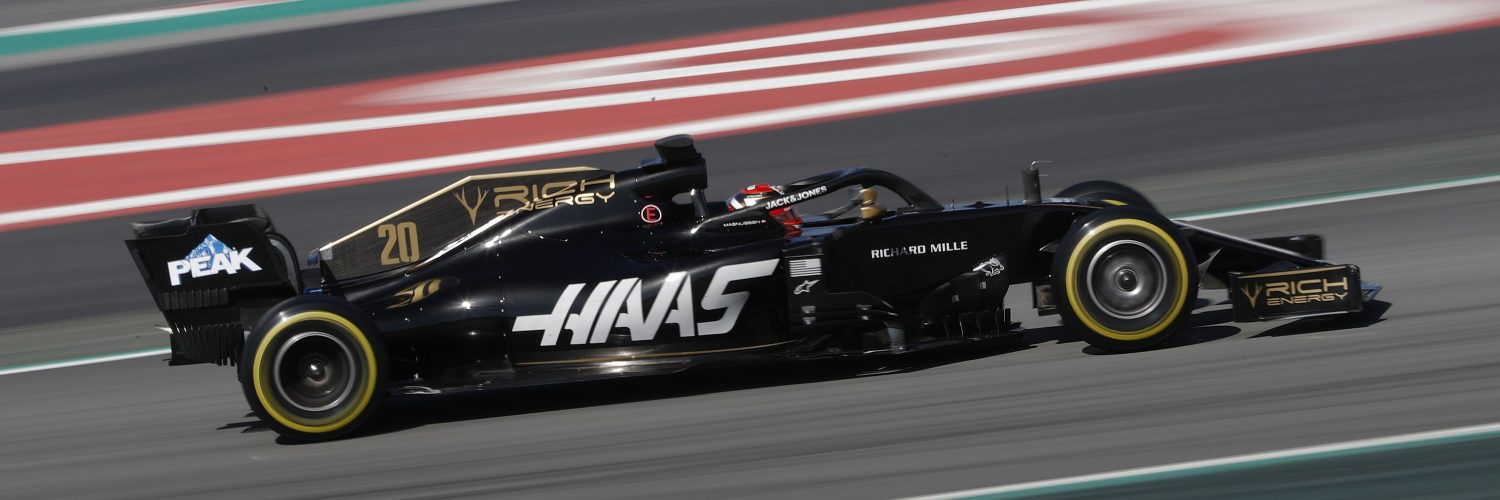The Haas Formula One team will continue to run new parts for Kevin Magnussen’s car with an aerodynamic upgrade for Hockenheim whilst Romain Grosjean will continue to run the Melbourne specification package.
The radical decision, taken before the British Grand Prix weekend, is aimed at evaluating what works and what doesn’t as the team attempts to find a fix to issues hampering the car’s performance.
“We decided on this exercise to get data and understand better what the difference between the two cars is, good or bad, then we can see where we can make improvements,” commented team boss Guenther Steiner in the team’s race preview. “We weren’t sure if the update we introduced in Barcelona was better or not. We’re running this again in Hockenheim, which is a different type of track with different temperatures – they’ll be a lot higher – and, as we all know, we couldn’t get a lot of data from the race at Silverstone from either of the cars.”
Haas had been running sixth in the constructors’ standings after points-scoring races in Spain and Monaco but since then has experienced an alarming drop in performance which has led to the current drastic measures being taken.
“Perplexing performance issues in the following races in Canada, France and Austria – where single-lap pace couldn’t be carried to race pace – led the team to carry out significant car-to-car aero tests,” added Steiner. “In the recent British Grand Prix at Silverstone, Grosjean’s Haas VF-19 reverted to the aero spec it ran at the season-opening Australian Grand Prix in Melbourne.
“Magnussen, meanwhile, carried on with the current spec. Good information was gleaned from Friday and Saturday’s on-track running, but the data collection was cut short following a double-DNF (Did Not Finish) early in the race. As a result, Grosjean will continue with the Melbourne aero spec in Germany. Magnussen, however, will debut the latest upgrade to the Haas VF-19, which was designed to improve downforce and the car’s overall driveability.
“Running these dual aero specs allows Rich Energy Haas F1 Team to compare and contrast what they know works with what they believe will work better. And on a racetrack that highlights both straight-line speed and good traction, the Hockenheimring provides the ultimate laboratory.”
It’s been a testing couple of weeks for the Haas team, a well-publicised spat between the team and title sponsor Rich Energy coming after the drivers collided during the British Grand Prix, compromising their race.

“We’re putting a lot of effort into improving the situation we’re in. We need to get the understanding of where we are and where we didn’t work in the right direction. That’s the thing we have to do.”



